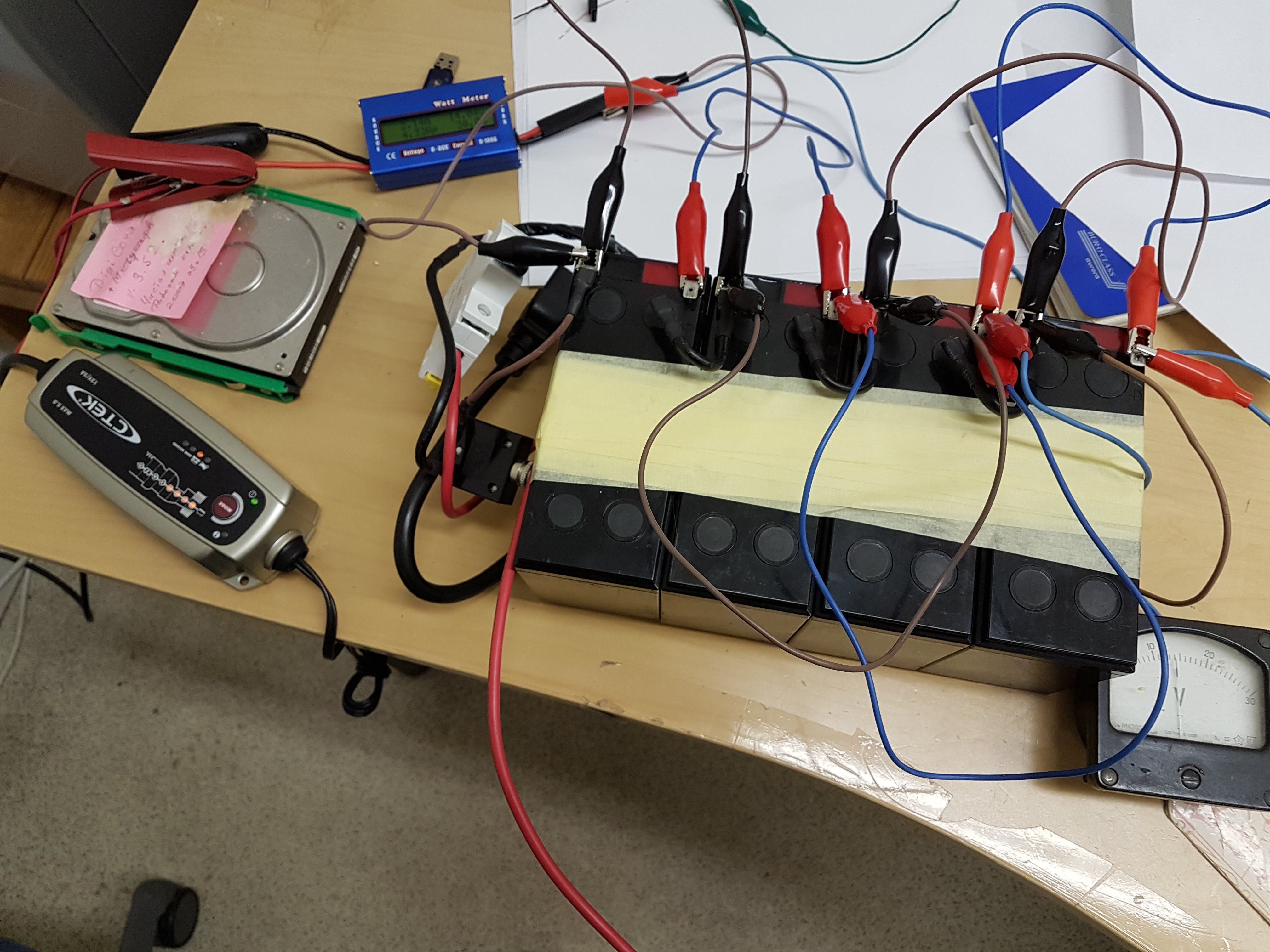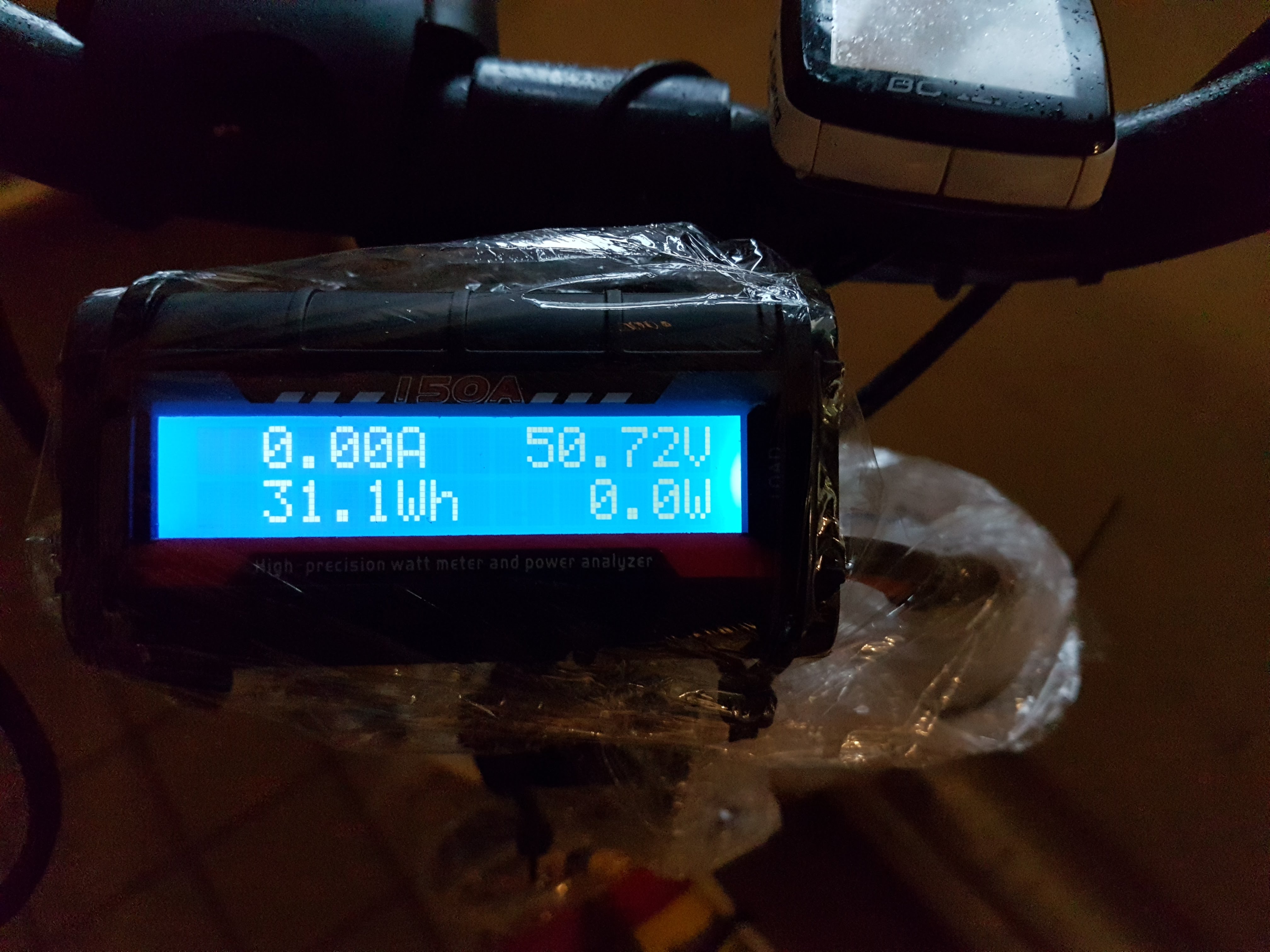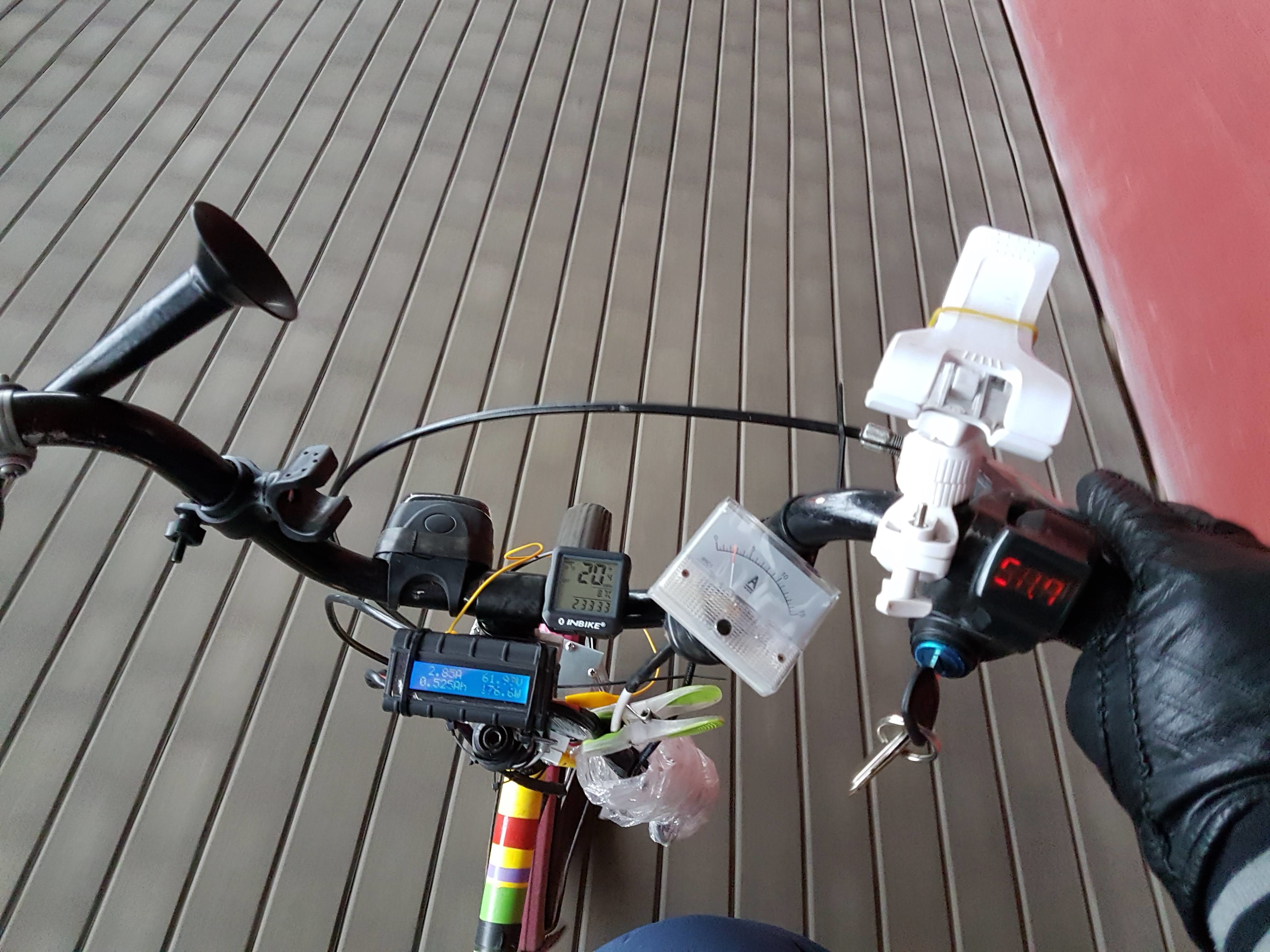Electric bike from shit and sticks
We upgrade the Vulgaris bicycle to the proud Electricus bicycle.

I want to talk about the construction of an electric bike for daily commuting to work, on the basis of a skladnichka with 20 "wheels.
I have long wanted to convert an ordinary bicycle, which I drove to work all year round, because my knees are old and not very healthy already, the headwind, and that's it, but really met only about a year ago.
I ordered the MXUS XF07F motor-wheel (to the front axle) on the aliexpress for the new year, the cheapest controller for three-phase DC motor wheels from fucking to 36 / 48V, 17A, cost $ 10 with delivery. Motorcycle, by the way, came out in a hundred.
Well, and more - a gas knob with a voltage indicator and an ignition key in one unit.
The rest I bought everything on site - wires with a cross section of 2.5 square millimeters for a power line, a 10 amp amp machine, connectors, and other trifles.
Batteries, in view of the high cost, and possible problems with the fire hazard of lithium - ion and polymer, decided to first use lead sealed with UPS.
Kakraz turned up b \ y, 5 years spent in the installation of Panasonic on 12v 7.2 ah.
They weigh about 2.5 kilograms per cell, that is, a 36 volt battery produces about 8 kilograms, and 48 volts gives 10 kilograms.
I decided to start with 36 volts, connecting 3 pieces in series, and charge it with existing car charging at 12 volts, re-commuting the whole farm each time into a parallel connection.

Oh yeah, I also bought a GT Power 150A Watt Meter watt meter to monitor important parameters - instantaneous power, battery voltage, current.

First, in brief, first impressions: great, just great!
Even if you only help a little on acceleration from scratch, spending only 2–3 watt hours on a trip of 2 kilometers - it is difficult to overestimate the help of creaking knees, because the most harmful load for them is precisely at low revs.
Well, on average, it turned out that the maximum speed at 36 volts of power is 18 kilometers per hour (which is very good, since I mostly traveled from my feet at a speed of 15 to 16 km / h), without the help of pedals, and the electricity consumption is about around 10 watts per kilometer.
Actually, my lead batteries can take about 40-50 watt-hours from one cell, that is, a 36-volt battery gives about 150 watt-hours or a little less, and lasts about 15 kilometers.
Later, in addition to a wattmeter, I put an analog ammeter with a scale up to 15 amperes - for feedback and more visual control of what is happening.

Winter departure at 36 volts, although 48 also tried - but in the winter slippery, but at high voltage.
this thing becomes more “rabid”, it becomes harder to thin the throttle with the handle of the gas - and the front wheel slip on the ice is not a very good thing, it's not far from here before falling.
Although, in general, I think that front-wheel drive on an electric body is more stable than the rear one — directional stability, especially in slippery conditions, is better;
In the summer, I switched to 48 volts, the maximum speed increased to 23 km / h, tried the 60 volt setup (5 batteries in series) - the speed still increased and was about 28 km / h, but the controller began to behave strangely, and for fear of burning it, and finding ourselves in peskhoye while the new controller will come to me, I used the 60v setup only occasionally, on long journeys (10 km one way).
With short trips like and 23 km / h, it's pretty good speed, you get fast enough.
I can advise those who are interested in the topic an extensive electric transport resource .
On this round up. Perhaps later I will write a more detailed article, because this topic is very deep and rather broad, I am ...

Good luck with electrification!
Oh yeah, the entire primary electrification project cost me around 250 euros, not counting batteries, the prices for which we start around 10-15 euros per piece ...

I want to talk about the construction of an electric bike for daily commuting to work, on the basis of a skladnichka with 20 "wheels.
I have long wanted to convert an ordinary bicycle, which I drove to work all year round, because my knees are old and not very healthy already, the headwind, and that's it, but really met only about a year ago.
I ordered the MXUS XF07F motor-wheel (to the front axle) on the aliexpress for the new year, the cheapest controller for three-phase DC motor wheels from fucking to 36 / 48V, 17A, cost $ 10 with delivery. Motorcycle, by the way, came out in a hundred.
Well, and more - a gas knob with a voltage indicator and an ignition key in one unit.
The rest I bought everything on site - wires with a cross section of 2.5 square millimeters for a power line, a 10 amp amp machine, connectors, and other trifles.
Batteries, in view of the high cost, and possible problems with the fire hazard of lithium - ion and polymer, decided to first use lead sealed with UPS.
Kakraz turned up b \ y, 5 years spent in the installation of Panasonic on 12v 7.2 ah.
They weigh about 2.5 kilograms per cell, that is, a 36 volt battery produces about 8 kilograms, and 48 volts gives 10 kilograms.
I decided to start with 36 volts, connecting 3 pieces in series, and charge it with existing car charging at 12 volts, re-commuting the whole farm each time into a parallel connection.

Oh yeah, I also bought a GT Power 150A Watt Meter watt meter to monitor important parameters - instantaneous power, battery voltage, current.

First, in brief, first impressions: great, just great!
Even if you only help a little on acceleration from scratch, spending only 2–3 watt hours on a trip of 2 kilometers - it is difficult to overestimate the help of creaking knees, because the most harmful load for them is precisely at low revs.
Well, on average, it turned out that the maximum speed at 36 volts of power is 18 kilometers per hour (which is very good, since I mostly traveled from my feet at a speed of 15 to 16 km / h), without the help of pedals, and the electricity consumption is about around 10 watts per kilometer.
Actually, my lead batteries can take about 40-50 watt-hours from one cell, that is, a 36-volt battery gives about 150 watt-hours or a little less, and lasts about 15 kilometers.
Later, in addition to a wattmeter, I put an analog ammeter with a scale up to 15 amperes - for feedback and more visual control of what is happening.

Winter departure at 36 volts, although 48 also tried - but in the winter slippery, but at high voltage.
this thing becomes more “rabid”, it becomes harder to thin the throttle with the handle of the gas - and the front wheel slip on the ice is not a very good thing, it's not far from here before falling.
Although, in general, I think that front-wheel drive on an electric body is more stable than the rear one — directional stability, especially in slippery conditions, is better;
In the summer, I switched to 48 volts, the maximum speed increased to 23 km / h, tried the 60 volt setup (5 batteries in series) - the speed still increased and was about 28 km / h, but the controller began to behave strangely, and for fear of burning it, and finding ourselves in peskhoye while the new controller will come to me, I used the 60v setup only occasionally, on long journeys (10 km one way).
With short trips like and 23 km / h, it's pretty good speed, you get fast enough.
I can advise those who are interested in the topic an extensive electric transport resource .
On this round up. Perhaps later I will write a more detailed article, because this topic is very deep and rather broad, I am ...

Good luck with electrification!
Oh yeah, the entire primary electrification project cost me around 250 euros, not counting batteries, the prices for which we start around 10-15 euros per piece ...
